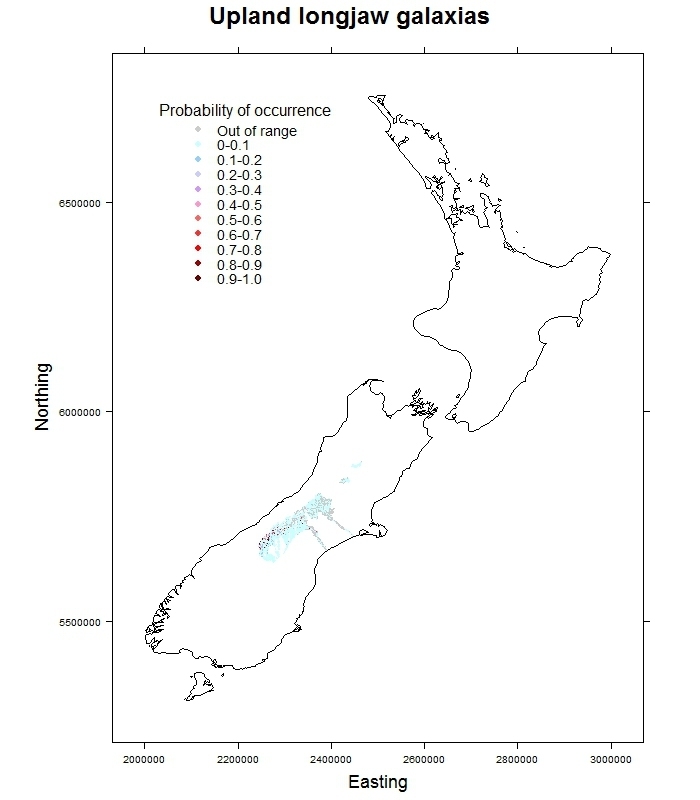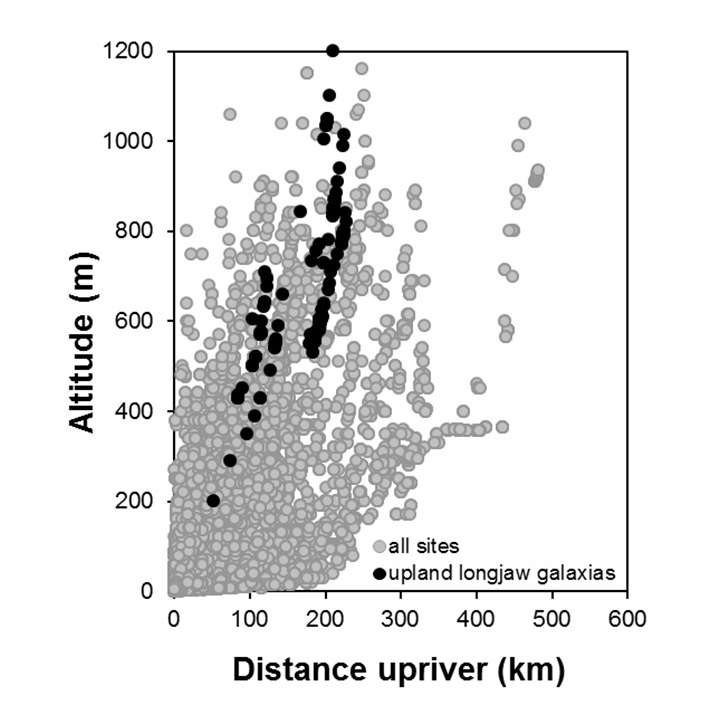Upland longjaw galaxias
Galaxias prognathus (Stokell, 1940)

As its name implies, the distinguishing characteristic of this member of the Galaxiidae family is its long, protruding jaw. In fact, its Latin name means exactly that – forward (pro) jaw (gnathos). The long, protruding jaw of the longjaw galaxias is unmistakable, and it is unlikely to be confused with any other species except the lowland longjaw, which has only 5 (compared to 7) pelvic fin rays. The longjaw galaxias is a slender, elongate fish and is one of the smaller galaxiids, rarely exceeding 80 mm in length.
The longjaw galaxias is non-diadromous, and the whole life cycle takes place in fresh water. Spawning occurs from March to May and also from October to November. They are nocturnal feeders and live on a variety of aquatic insects, especially mayflies. Studies of their diets showed that they selected soft-bodied prey in preference to harder shelled animals like snails or cased-caddis.
Longjaw galaxias generally live at mid to high altitudes in rivers and streams draining to the east coast of the South Island. Like the Canterbury and alpine galaxias, a population also occurs in the headwaters of the Buller River (Maruia River) near Lewis Pass. Although it inhabits swiftly flowing streams, longjaw galaxias are usually found along the quiet river margins.
![Upland longjaw galaxias - distribution map [2024]](/sites/default/files/styles/wide/public/2024-02/Upland%20longjaw%20galaxias.jpeg?itok=SYdnnby5)


